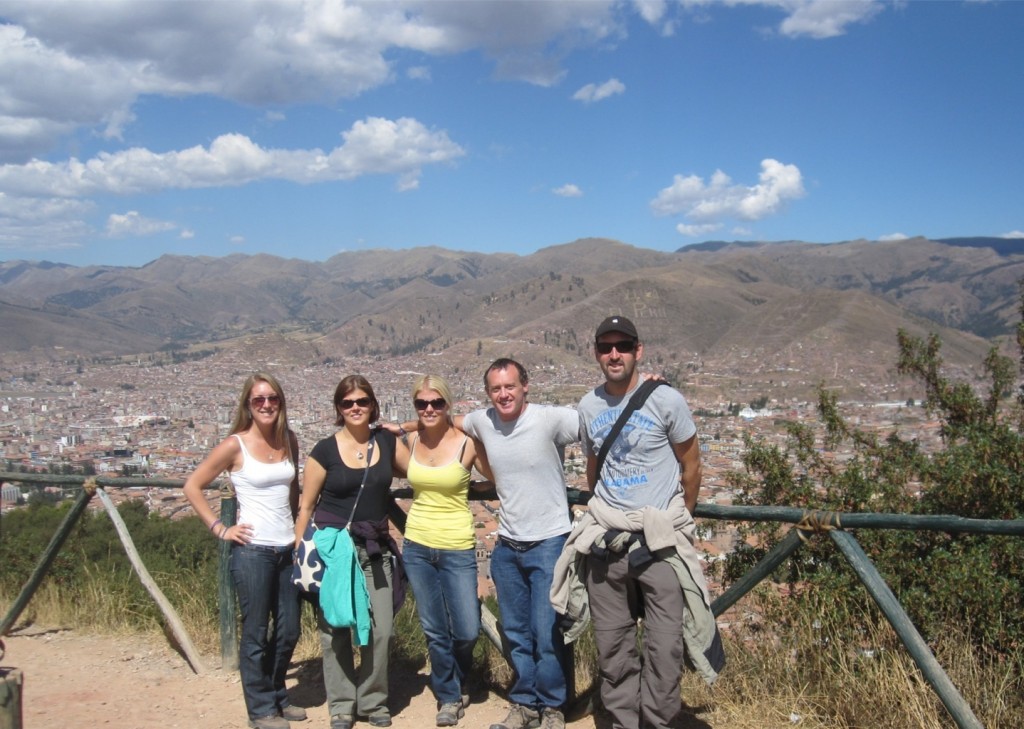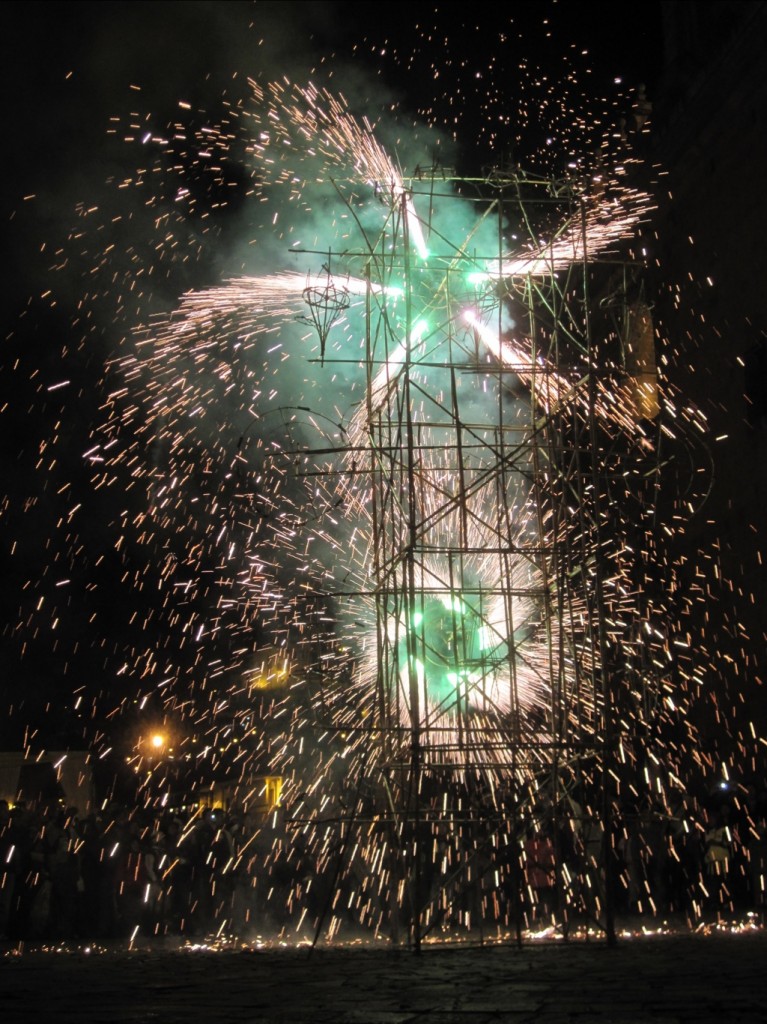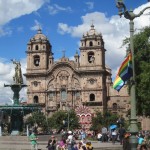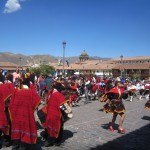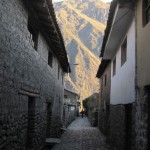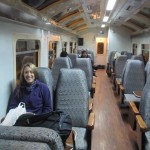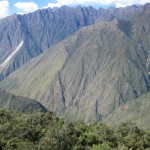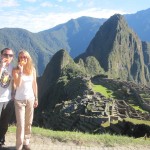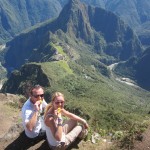I’d forgotten quite how vibrant Cuzco is. It was the capital of the Inca Empire, and still has that feeling about it – granted, you have to pretend that the hordes of tourists aren’t there, but watching colourful parades in the main square with fluttering rainbow flags and Inca temples up on the steep hillside above, you get a sense of what life was like here 500 years ago.
Cuzco’s also the city I spent most time in ten years ago, as I volunteered here with a friend’s charity, Kiya Survivors. It was fun wandering around the city finding old haunts and trying to work out which place we’d lived in for six weeks. I’d hoped to be able to pay a visit to them at the Rainbow Centre on Urubamba which was newly started when we were there, but alas it didn’t quite work out with our timing.
The city’s prominent place on the tourist map does have some distinct advantages once you get over the abundance of white tourists who speak only English. There’s plenty of great international food in the town (we even had a Indian buffet, and a full English breakfast!), and some of the sights are amazing. We dropped into the pre-Colombian art museum, which had stunning exhibits of ceramics, metal and woodwork from before the Incas. You could really see how actually they were a lot more sophisticated than the designs and techniques used in later years; presumably a lot was lost in the Inca conquest.
Midwinter is a big event in the Inca calendar, and with it only a few weeks away, the streets of the city were alive every day with cannons of fireworks and continual parades around the main square. On the day of the Queen’s Jubilee, we were more than a little surprised to see a corresponding military celebration in Cuzco’s main square – royalists at a distance, we wondered? Or perhaps this was a coup taking place, with all the guns, gunpowder and bayonets on display? The woman in the tourist office set the matter to rest, clearly bored with it already as she told us this happens every Sunday. Only in Peru!
Around the city are various Inca relics that survived Spanish destruction, the highlight of which is Sacsayhuaman (conveniently pronounced ‘sexy woman’), a temple/fortress where many of the annual Inca festivities were celebrated. The place is formed from huge carved rocks, which have been amazingly chiseled and fitted together perfectly – the Incas didn’t use mortar, but there’s absolutely no gap between each stone.
We also took the chance to make the mandatory pilgrimage to Machu Picchu, the famous hilltop Inca site which was never discovered by the Spanish and hence never destroyed. It really lived up to expectations even on a second visit – an incredible set of stone structures perched on an unworldly mountaintop, with wonderful views around. We climbed Machu Picchu Mountain behind the site, with even more impressive views looking down.
For all of its aesthetic glory, Machu Picchu has unfortunately become an example of the bad side of tourism. As its fame has risen, authorities have been keen to cash in on wealthy foreign tourists – meaning the place is entirely out of reach of the very locals whose heritage is being put on display. It’s not helped that the only way to get to the town below the site is on foot (that’s the Inca Trail), or by train – with even the cheapest fare costing $50 one way. That’s the sort of price you might get on the railway back home!
Even excluding transport, we were pretty stunned at an entrance fee of $47, which is a lot to us as backpackers. The fee for locals is half that – but when you consider that it works out at 75% of the Peruvian average monthly salary, it is still ridiculously high. That’s equivalent to a ticket to Stonehenge costing £1500! Other than guides and others working there, we saw no obvious Peruvian faces during our visit, and it really isn’t hard to see why. Instead, there were hordes of rich westerners queuing for the lunch buffet at the cafe on site – a snip at $35 – before some retire to the lodgings at the hotel on site, possibly one of the most expensive hotels anywhere, with rooms from $975 (excluding tax). It’s almost as jaw-dropping as the view of the ruins themselves.
Taking it all in, you’re left thinking that there must be some better way of making it work – sure, make all the profit you can from us rich foreigners, but not at the cost of denying Peruvians access to their own heritage.
Simon
- The Cathedral in Cuzco´s Plaza de Armas
- Parades in the square
- Dancing in the parade. Scary masks!
- Cuzco does the Queen´s Jubilee
- Fireworks, on a wicker cage metres from the crowd…
- They were pretty impressive, and scary!
- Rocks at Sacsayhuaman – look, no mortar!
- Sacsayhuaman central field and surrounding temple/fortress
- Standing over Cuzco
- A typical cobbled street in Ollyantambo, with the mountains towering behind
- The luxury train to Aguas Calientes
- You can just make out the Inca trail running round the hill, to the campsite for the last night on the far right.
- The required shot!
- Looking down from the mountain above. You can see Wayna Pichu behind in the distance


